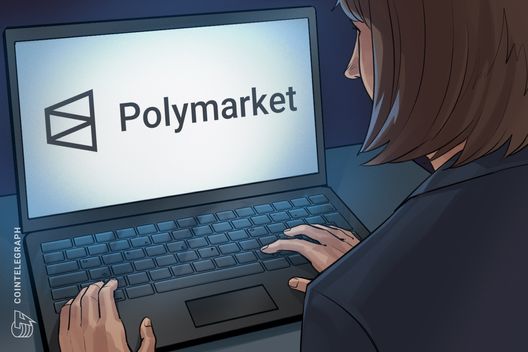Here’s How Gen-Z Can Become Homeowners
4 min read
Young homebuyers like open spaces with functionality and personalization.
My parents were in their 20s when they bought their first home. It was the 1950s, Midcentury Modern, (my mother’s favorite furniture style) was just modern, and the house, a Dutch colonial in Brooklyn with four bedrooms, one full bath and two half baths, cost them about $25,000. That would be about $285,000 today, adjusted for inflation.
It was a perfect home for a family of that era, with a finished basement for kids to play in during the winter and a side yard for outdoor games in the warmer months. That mattered more than the whole family sharing one bathroom at the end of the hall, not uncommon in the decades before ‘master suites’ came to dominate home plans. It was located in a safe, walkable neighborhood with good schools too.
My childhood house most recently sold for $1.25 million in 2018, putting it out of reach for most 20-somethings wanting to start their own families in the next few years, as my parents did. In that way, it’s an exemplar of our times, and one of the reasons why Generation Z only owns about 2% of American homes. It’s not for lack of desire!
Real estate technology firm Hommati reports that 97% of these young adults, born between 1997 and 2012, want to become homeowners – most before they’re 35! I asked several experts how to help them fulfill these dreams and ideals. Their responses, sent by email, follow.
Benefits of Home Ownership
“The core benefits of homeownership haven’t changed over the decades, but their significance for young people, particularly in terms of long-term financial outcomes, has been magnified,” shares Rob Chrane, CEO of Down Payment Resource, a firm that helps match eligible buyers with homeownership assistance programs.
MORE FOR YOU
Owning a home is the most powerful vehicle most Americans have for building wealth, he points out, with the median net worth of homeowners 40 times higher than renters. “Gen Z’ers who buy a home early in life will benefit from more years of appreciation and equity accumulation,” he adds.
There are non-financial benefits too, Chrane notes. “Studies have consistently shown that homeowners experience better educational and health outcomes compared to renters. Stability and ownership pride often translate into greater investments in the local community, leading to the creation of better, safer, and more stable neighborhoods and communities.” This has benefits for their children’s generation too. It’s much harder to achieve for these young parents than it was for mine – and probably yours too.
American Dream Challenge
“Throughout the three waves of the America at Home Study, we observed significant insights into the perspectives of younger generations. One finding is that younger generations tend to define home as ‘family’ to a greater degree compared to other generations who are more inclined to define home as a ‘safe place’ and ‘comfort,’” shares Teri Slavik-Tsuyuki, the study’s co-founder and principal at community development research firm tst ink.
Sadly, there are major gaps between their yearning for home, family, comfort and their perceived ability to achieve these, she observes. Covid widened them. “While the pandemic had major ramifications for everyone, it greatly influenced the well-being of younger generations in contrast to their older counterparts. Their mental, emotional and financial well-being faced heightened challenges when compared to other age groups,” she says.
Vision of Home
Here’s what these hopeful buyers would like to achieve when they finally have the means to become homeowners. “In their homes, they love DIY projects and love to personalize individual products while aligning with their sustainable practices,” reveals Abbey Stark, interior design leader at IKEA USA. “They aspire to have purposeful and unique spaces that they can create an escape from the chaos of the world and everyday life. They believe in the importance of curating spaces to fit their wants and needs.,” she adds. That DIY inclination will prove extremely helpful in buying some of the fixer homes available in lower price ranges.
When it comes to their key kitchen and bath spaces – some of a home’s most valuable square footage – they’re focused on personalized and very functional spaces, Stark says. “They enjoy mixing vintage, repurposed and sustainable products.” Self-care is prioritized for a sense of wellbeing and comfort, shaping spaces that are easy to use. Technology is also essential for these buyers, the designer adds.
Down Payment Hurdle
“The biggest barrier to homeownership for young, early career homebuyers often isn’t the monthly mortgage, it is the immense challenge of saving for down payment and closing costs — which typically exceed $10,000 on the very low end,” Chrane observes. Elevated home prices are driving these numbers up too, he adds.
The good news is that there are down payment assistance (DPA) programs that can help first time buyers, he shares, including HUD-approved housing counselors that meet national standards, plus online courses. “The ‘best’ DPA could come down to how the assistance money can be used. Can it be used to cover closing costs so the buyer doesn’t have to rely on the seller to cover those and can thus make a more competitive offer on a contract? Can the funds be used to reduce the first mortgage interest rate? Reduce mortgage insurance costs? Cover pre-paids? Repairs on the new home? Eligible uses of funds could be the difference maker for some buyers,” he suggests. These assistance programs are also starting to become available on manufactured and multi-family housing, opening more options for buyers.
There are more than 1300 agencies, including state and local housing finance agencies, cities, nonprofits and others helping new homebuyers, Chrane comments, sharing a link homebuyers can use to research what’s available for them.
The CEO urges young buyers to research their options sooner rather than later. “Don’t wait around for the market to change, and don’t wait around to learn what your path to homeownership looks like.” Being prepared in a volatile market seems like sound advice.







